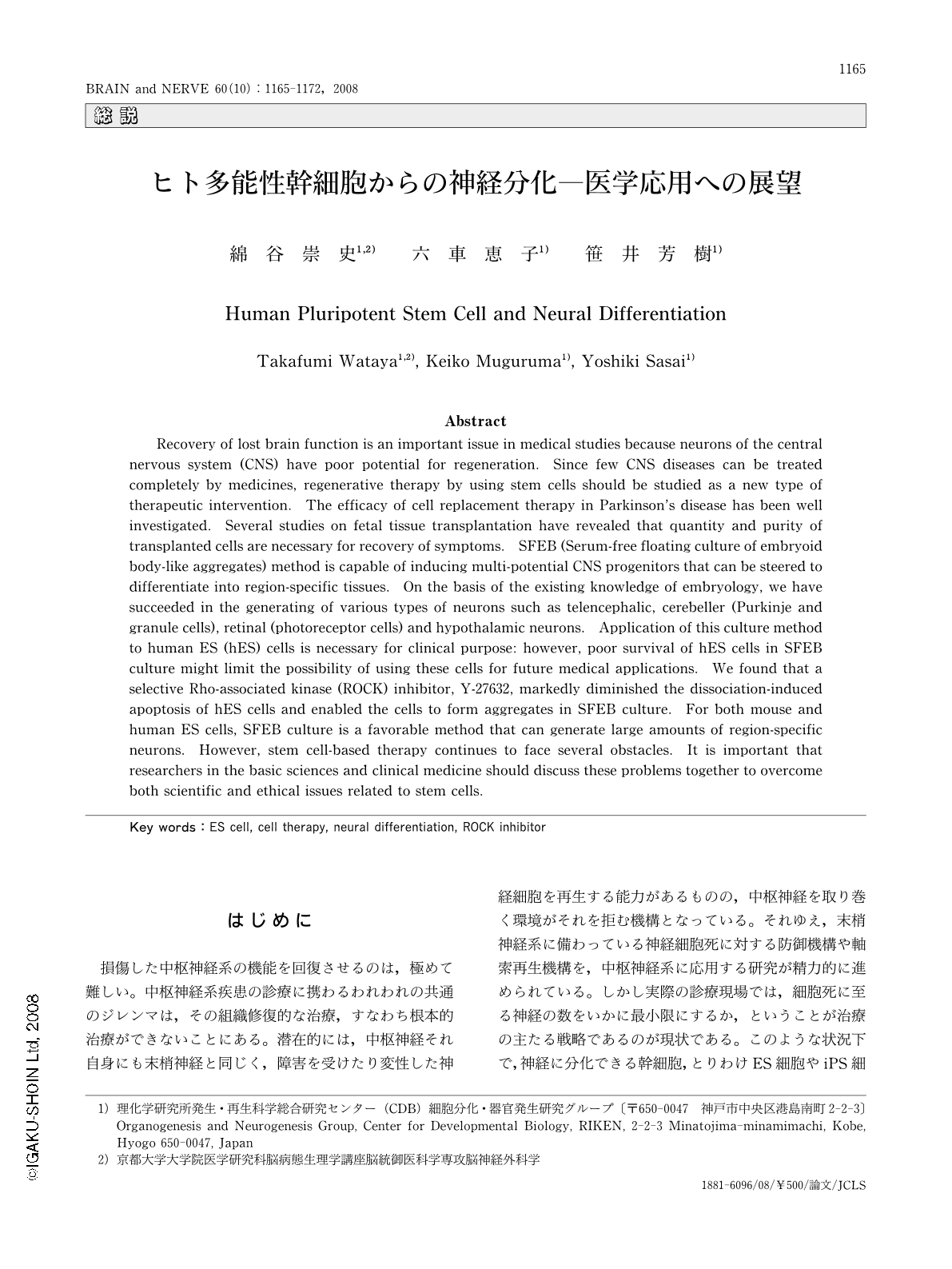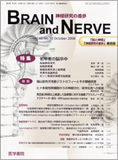Japanese
English
- 有料閲覧
- Abstract 文献概要
- 1ページ目 Look Inside
- 参考文献 Reference
はじめに
損傷した中枢神経系の機能を回復させるのは,極めて難しい。中枢神経系疾患の診療に携わるわれわれの共通のジレンマは,その組織修復的な治療,すなわち根本的治療ができないことにある。潜在的には,中枢神経それ自身にも末梢神経と同じく,障害を受けたり変性した神経細胞を再生する能力があるものの,中枢神経を取り巻く環境がそれを拒む機構となっている。それゆえ,末梢神経系に備わっている神経細胞死に対する防御機構や軸索再生機構を,中枢神経系に応用する研究が精力的に進められている。しかし実際の診療現場では,細胞死に至る神経の数をいかに最小限にするか,ということが治療の主たる戦略であるのが現状である。このような状況下で,神経に分化できる幹細胞,とりわけES細胞やiPS細胞の出現は,根本的治療を可能にするものとして期待が高まっている。本稿では,これまでわれわれが開発してきたマウスES細胞から中枢神経系細胞への選択的な分化誘導系と,そのヒトES細胞への応用について述べるとともに,新たな治療戦略としての可能性について論じる。
Abstract
Recovery of lost brain function is an important issue in medical studies because neurons of the central nervous system (CNS) have poor potential for regeneration. Since few CNS diseases can be treated completely by medicines,regenerative therapy by using stem cells should be studied as a new type of therapeutic intervention. The efficacy of cell replacement therapy in Parkinson's disease has been well investigated. Several studies on fetal tissue transplantation have revealed that quantity and purity of transplanted cells are necessary for recovery of symptoms. SFEB (Serum-free floating culture of embryoid body-like aggregates) method is capable of inducing multi-potential CNS progenitors that can be steered to differentiate into region-specific tissues. On the basis of the existing knowledge of embryology,we have succeeded in the generating of various types of neurons such as telencephalic,cerebeller (Purkinje and granule cells),retinal (photoreceptor cells) and hypothalamic neurons. Application of this culture method to human ES (hES) cells is necessary for clinical purpose: however,poor survival of hES cells in SFEB culture might limit the possibility of using these cells for future medical applications. We found that a selective Rho-associated kinase (ROCK) inhibitor,Y-27632,markedly diminished the dissociation-induced apoptosis of hES cells and enabled the cells to form aggregates in SFEB culture. For both mouse and human ES cells,SFEB culture is a favorable method that can generate large amounts of region-specific neurons. However,stem cell-based therapy continues to face several obstacles. It is important that researchers in the basic sciences and clinical medicine should discuss these problems together to overcome both scientific and ethical issues related to stem cells.

Copyright © 2008, Igaku-Shoin Ltd. All rights reserved.


